Agriculture
Extreme Weather Patterns Causing State of Agricultural Emergency in Canada

We welcome guest writers to all of our Todayville platforms. Here’s a submission from Emily Folk. Emily is passionate about agricultural sustainability and more of her work can be found on her site, Conservation Folks.
Extreme Weather Patterns Causing State of Agricultural Emergency in Canada
Climate change is spurring intense droughts and floods around the world, leading to crop failures. While corporations and consumers look for ways to reverse the impact of global warming, farmers are dealing with the consequences now.
Canada has high hopes for impending weather shifts. As temperatures rise, the country could gain access to more fertile land. Yet, it’s also dealing with new challenges, including droughts and constant rain.
A Lack of Moisture
Twelve counties in Manitoba declared a state of agricultural emergency due to a severe drought, leaving farmers unable to produce enough feed for cattle. While some are paying to transport hay, others are opting to sell.
Dianne Riding, VP of the Manitoba Beef Producers, says her farm produces around 1,800 bales of hay in a typical season. Last year, they had 500 — this season, only 250. With her reserves depleted, she says she won’t have enough to feed her 130 cows.
Some farmers are transitioning to regenerative agricultural practices in an attempt to prevent livestock from decimating plant life. Other countries, such as China, have already used this method to restore 3.7 million acres of land and increase grain production by 60%.
Canada’s ability to navigate climate change will hinge on its management of water resources. Its prairies, which make up 80% of farmland, were hit by the infamous Dust Bowl in the 1930s. According to researchers, it’s a problem that could repeat itself as temperatures rise.
Federal organizations are establishing green initiatives to simplify environmental shifts. Many corporations are also transitioning to eco-friendly practices, both due to environmental concern and buyer demand. Globally, 66% of consumers are willing to pay more for products from a sustainable company.
A Downpour of Rain
In other parts of the country, excess moisture is an issue. Lac Ste. Anne County in north-central Alberta has declared a state of agricultural emergency due to persistent showers and early snowfall. Between mid-June and the end of July, the county received 406 millimeters of rain.
One significant issue is livestock feed. With wet fields, farmers have difficulty accessing their crops. When they do, the hay often isn’t dry enough to safely and correctly bail it.
Stacey Berry, the county’s assistant manager of agricultural services, reports some fields are seeing upwards of 80% crop death. The goal of the state of emergency is to make it easier for farmers to file insurance claims for losses.
Nearby Leduc County, 30 kilometers south of Edmonton, also declared a local state of agricultural disaster. Similar to in Lac Ste. Anne, the poor weather affected the quality and quantity of yields.
An Eventual Warming
The federal government recently released a warning that droughts, floods and violent storms will increase in frequency. As a result of climate change, experts predict most regions of Canada will warm during the next 60 years. As the country is high-latitude, warming will be more pronounced than the global average.
As the droughts increase, crop yields will decline. Warmer summers could boost the number of heat-wave-related deaths, especially in poultry operations. Plus, diminished weight gain in cattle could lead to reduced milk and dairy production.
In addition to extreme weather events and decreased yield, climate change will also affect disease and pests. Higher levels of Carbon Dioxide (CO2) will lead to greater weed growth and the prevalence of pests and pathogens. The range, frequency and severity of insect and disease infections may rise drastically.
An Opportunity to Expand
In Canada, rising temperatures could be a beneficial opportunity for farmers, opening up millions of once frozen acres. The amount of arable land in Alberta, Manitoba and Saskatchewan alone could increase up to 40% by 2040.
Most regions will likely become warmer, with longer pest-free seasons and increased evaporation. The higher temperatures require less feed for livestock, benefiting production and survival rates. It could also benefit soil health by enhancing carbon sequestration and reducing the emission of greenhouse gases.
Farmers hope to capitalize on the warmer conditions by exporting food to regions hit by crop failure. The world agricultural production will need to increase by 50% by 2050 to keep up with population growth.
_______________________________________________________________

I’m Emily Folk, and I grew up in a small town in Pennsylvania. Growing up I had a love of animals, and after countless marathons of watching Animal Planet documentaries, I developed a passion for ecology and conservation.
Read more stories on Todayville Agriculture.
Agriculture
Federal cabinet calls for Canadian bank used primarily by white farmers to be more diverse
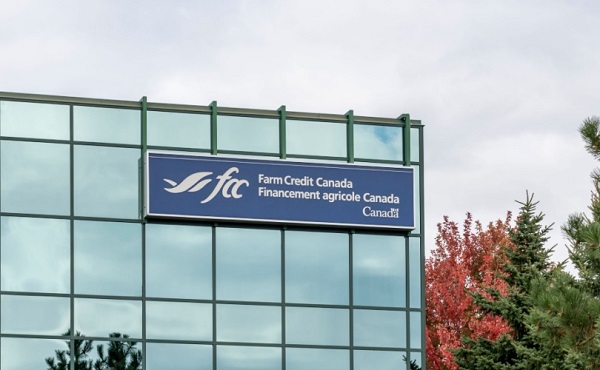
From LifeSiteNews
A finance department review suggested women, youth, Indigenous, LGBTQ, Black and racialized entrepreneurs are underserved by Farm Credit Canada.
The Cabinet of Prime Minister Mark Carney said in a note that a Canadian Crown bank mostly used by farmers is too “white” and not diverse enough in its lending to “traditionally underrepresented groups” such as LGBT minorities.
Farm Credit Canada Regina, in Saskatchewan, is used by thousands of farmers, yet federal cabinet overseers claim its loan portfolio needs greater diversity.
The finance department note, which aims to make amendments to the Farm Credit Canada Act, claims that agriculture is “predominantly older white men.”
Proposed changes to the Act mean the government will mandate “regular legislative reviews to ensure alignment with the needs of the agriculture and agri-food sector.”
“Farm operators are predominantly older white men and farm families tend to have higher average incomes compared to all Canadians,” the note reads.
“Traditionally underrepresented groups such as women, youth, Indigenous, LGBTQ, and Black and racialized entrepreneurs may particularly benefit from regular legislative reviews to better enable Farm Credit Canada to align its activities with their specific needs.”
The text includes no legal amendment, and the finance department did not say why it was brought forward or who asked for the changes.
Canadian census data shows that there are only 590,710 farmers and their families, a number that keeps going down. The average farmer is a 55-year-old male and predominantly Christian, either Catholic or from the United Church.
Data shows that 6.9 percent of farmers are immigrants, with about 3.7 percent being “from racialized groups.”
National census data from 2021 indicates that about four percent of Canadians say they are LGBT; however, those who are farmers is not stated.
Historically, most farmers in Canada are multi-generational descendants of Christian/Catholic Europeans who came to Canada in the mid to late 1800s, mainly from the United Kingdom, Ireland, Ukraine, Russia, Italy, Poland, the Netherlands, Germany, and France.
Agriculture
Bovaer Backlash Update: Danish Farmers Get Green Light to Opt Out as UK Arla Trial Abruptly Ends!
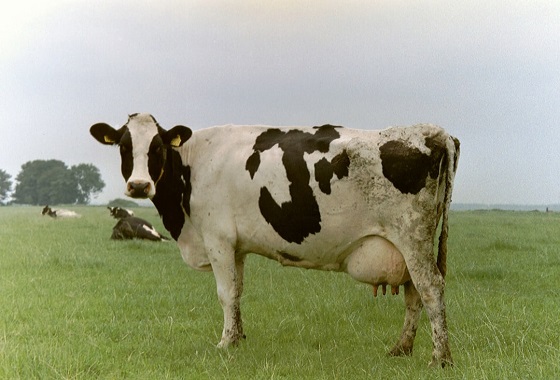
In a pivotal shift, Denmark’s Veterinary and Food Administration has issued new guidance: Farmers can immediately suspend Bovaer administration if they “suspect” it poses risks to herd health. On the heels of the Danish announcement—the major UK trial of Bovaer on 30 Arla Foods farms has abruptly ended amid health fears.
The Mandate Cracks: Farmers Given the Green Light to Opt Out
On November 5, 2025, Denmark’s Fødevarestyrelsen (Danish Veterinary and Food Administration) issued a press release and accompanying guidance clarified that farmers (specifically the herd manager, or besætningsansvarlige) could immediately exempt individual cows or entire herds from the mandatory Bovaer use if they suspected it was causing or exacerbating health issues, prioritizing animal welfare under existing regulations.
Sonia Elijah investigates is a reader-supported publication.
To receive new posts and support my work, consider becoming a free or paid subscriber.
This was in response to surging reports of cow illnesses since October 1, where farms with over 50 cows have been mandated to use the synthetic additive, Bovaer (containing 3-nitrooxypropanol), developed by DSM-Firmenich. If the farms do not comply, they face heavy fines.
Bovaer Backlash: Danish Cows Collapsing Under Mandatory Methane-Reducing Additive |
||||||
|
||||||
| Article updated: November 4 | ||||||
|
The guidance emphasized that exemptions apply to cases of feed-related metabolic disorders (e.g., fatty liver, milk fever, or rumen issues) and require documentation via a “tro- og loveerklæring” (declaration of good faith) on LandbrugsInfo, with veterinary consultation recommended for severe cases. No fines would apply for such welfare-based pauses, though farmers must still meet methane reduction goals via alternatives like increased feed fat. This effectively gave the “green light” for opting out on welfare grounds.
Reports surged of Danish dairy farmers unilaterally halting Bovaer administration, accusing the government of “poisoning” livestock to meet climate targets.
A November 3, 2025, article in LandbrugsAvisen (Denmark’s leading agricultural newspaper), quoted veterinarian Torben Bennedsgaard from BoviCura (a specialized cattle health advisory service closely tied to Danish dairy producers). He stated: “Every other farmer has problems with Bovaer.”
“Bovaer is a proven, effective and safe solution”
A spokesperson for DSM-Firmenich, the company that developed Bovaer, told Agriland, that “animal welfare is our highest priority”. They went on to state: “We are actively engaging with the relevant organisations to ensure that all these concerns are fully investigated and properly addressed..In previously reported cases, Bovaer was not identified as a contributing factor to the health concerns raised…Bovaer is a proven, effective and safe solution that has been successfully used for over three years by thousands of farmers in over 25 countries.”
UK Ripple Effects: Arla Trial Abruptly Halted
On 7 November, the BBC reported that the major UK trial of Bovaer on 30 Arla Foods farms concluded earlier than planned amid “farmer health concerns” for cows, echoing Danish reports. It stated: ‘Bovaer is now the focus of an investigation in Denmark after farmers raised fresh concerns but manufacturer DSM-Firmenich said the additive was “proven, effective and safe.”’
Arla, which supplies major retailers like Tesco and Aldi, is now reviewing data before deciding on wider rollout. The trial aimed to cut methane by 30% but faced criticism for lacking transparency on animal impact.
Jannik Elmegaard, of the Danish Food and Veterinary Administration, told the BBC: “They very aware that some herd owners have reported animals showing signs of illness after being fed with Bovaer” but it was “unclear how many cows were affected”.
Last year, I reported on the UK’s Arla trial—whilst digging through various safety assessment reports on Bovaer, I came across several troubling findings and anomalies.
BREAKING: Methane-Reducing Feed Additive Trialled in Arla Dairy Farms |
||||||
|
||||||
| On November 26th, Arla Foods Ltd. announced via social media their collaboration with major UK supermarkets like Tesco, Aldi, and Morrisons to trial Bovaer, a feed additive, aiming to reduce methane … | ||||||
|
In a public rebuttal, Frank Mitloehner, Professor of Animal Science at UC Davis and Director of the Clarify Center for Enteric Fermentation Research, posted on X ”Hogwash!”—dismissing viral claims of Bovaer-related cow health issues in Denmark by highlighting his lab’s ongoing research and widespread U.S. usage data.
The green light in Denmark is not a mere victory—it’s a damning admission that the emperor’s new feed has holes big enough for a whole herd to escape through.
As Arla licks its wounds and DSM-Firmenich doubles down on “proven safe,” the real trial begins: can climate crusaders stomach the science when it bites back?
If you appreciate the hard work that I do as an independent investigative journalist,
please consider supporting me with a paid subscription.
Subscribe to Sonia Elijah Investigates
-

 Carbon Tax16 hours ago
Carbon Tax16 hours agoCarney fails to undo Trudeau’s devastating energy policies
-

 Business12 hours ago
Business12 hours agoBudget 2025: Ottawa Fakes a Pivot and Still Spends Like Trudeau
-

 COVID-192 days ago
COVID-192 days agoFreedom Convoy protestor Evan Blackman convicted at retrial even after original trial judge deemed him a “peacemaker”
-
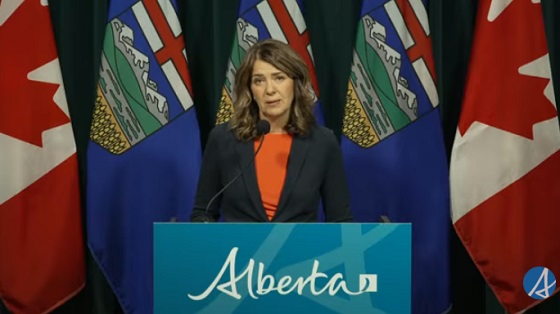
 Alberta2 days ago
Alberta2 days agoAlberta bill would protect freedom of expression for doctors, nurses, other professionals
-

 Health12 hours ago
Health12 hours agoTens of thousands are dying on waiting lists following decades of media reluctance to debate healthcare
-
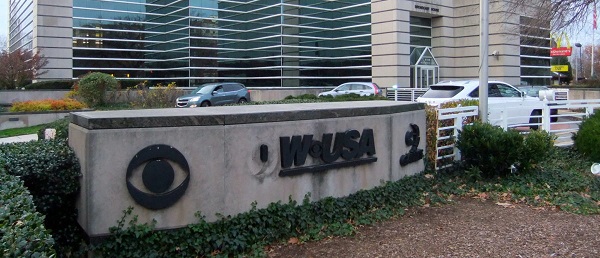
 Daily Caller2 days ago
Daily Caller2 days agoBari Weiss Reportedly Planning To Blow Up Legacy Media Giant
-

 Daily Caller2 days ago
Daily Caller2 days agoMTG Says She’s Resigning From Office
-

 Daily Caller2 days ago
Daily Caller2 days agoTrump Gives Zelenskyy Until Thanksgiving To Agree On Peace Deal, With U.S. Weapons And Intel On The Line










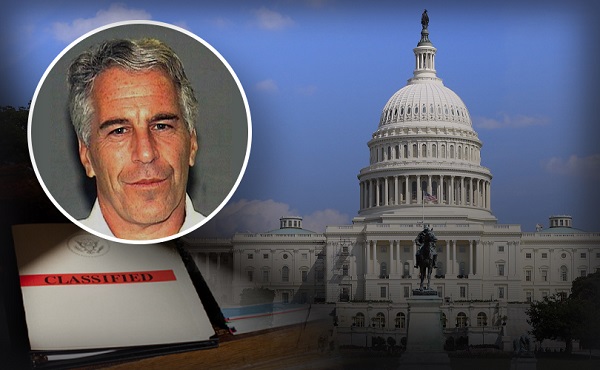





You must be logged in to post a comment Login